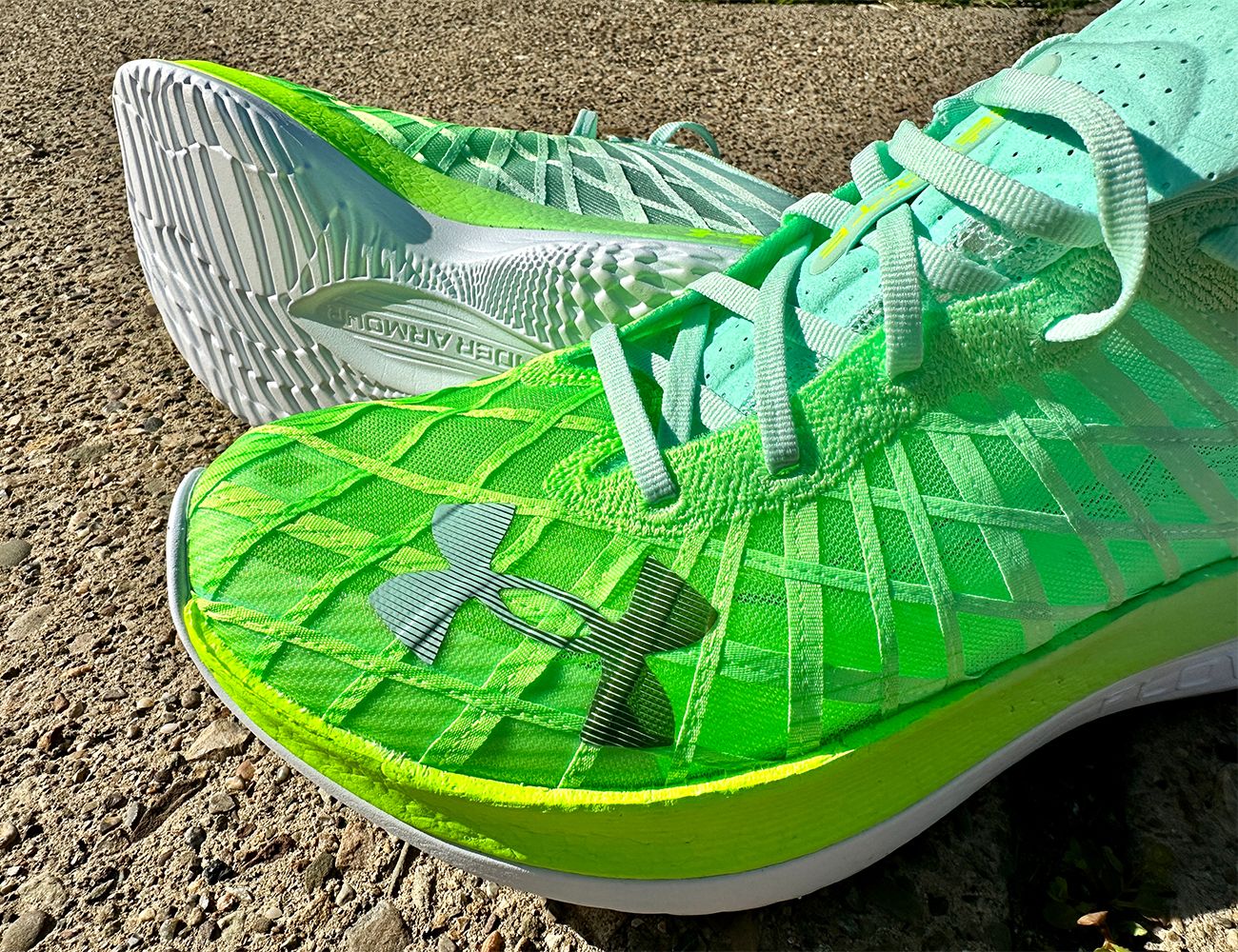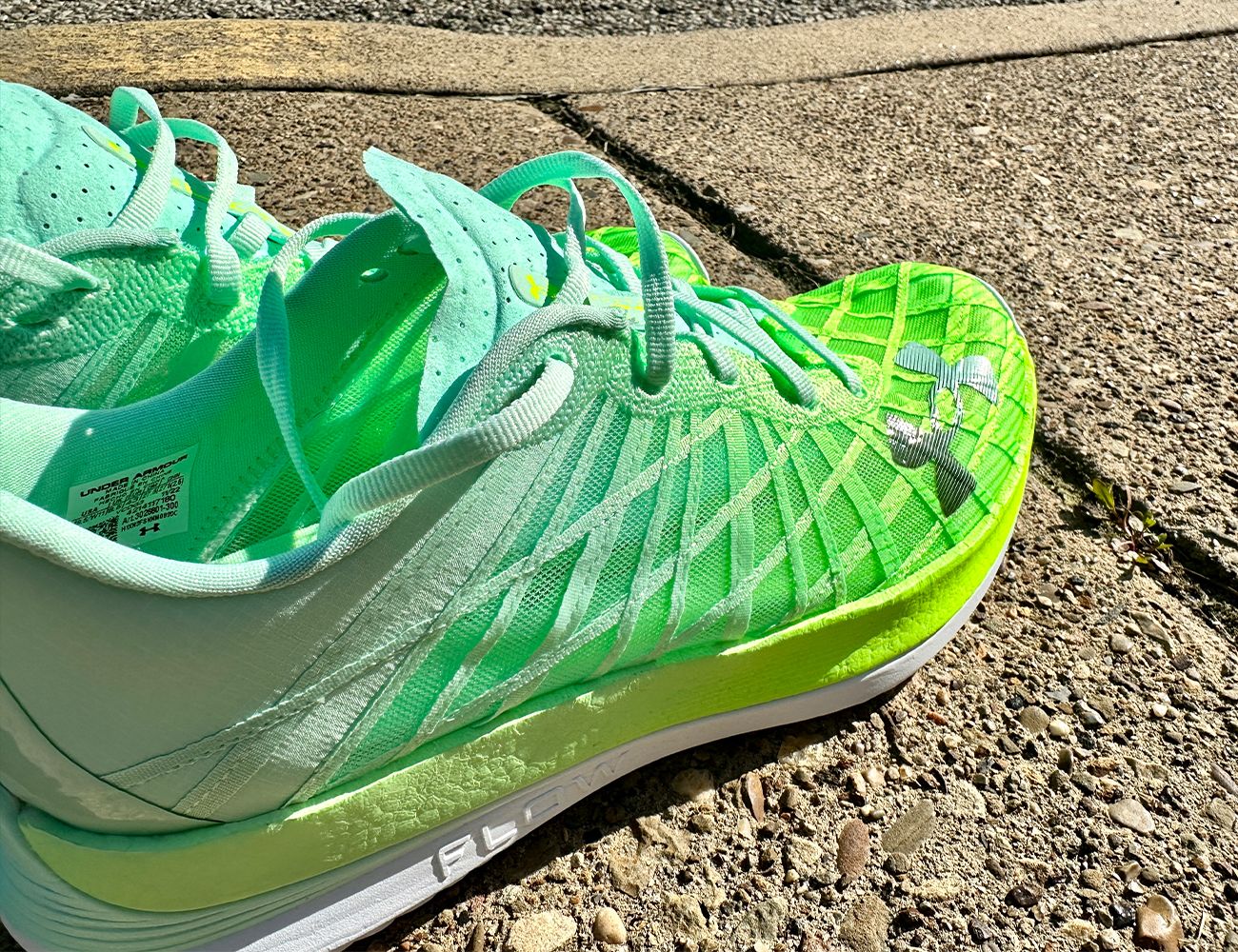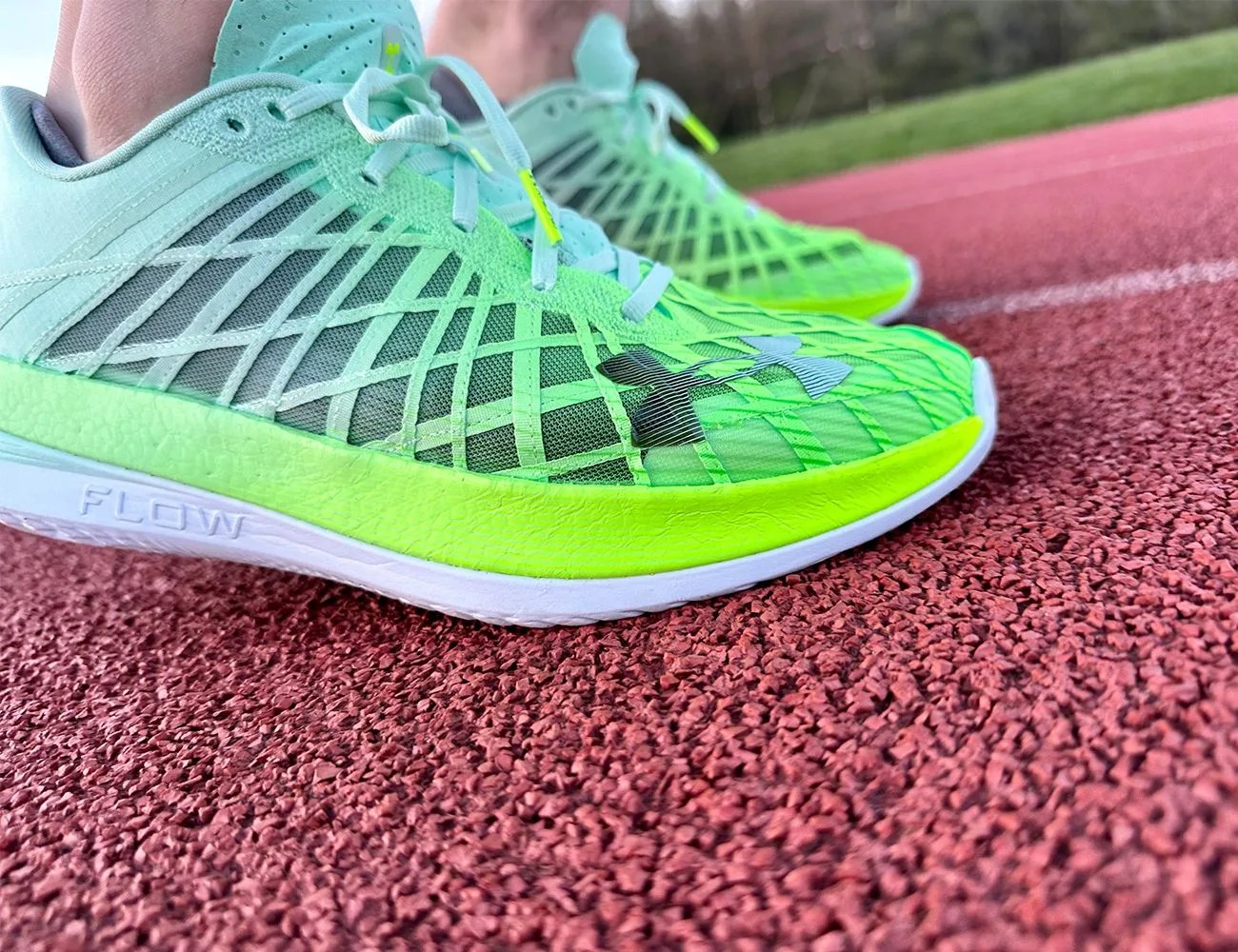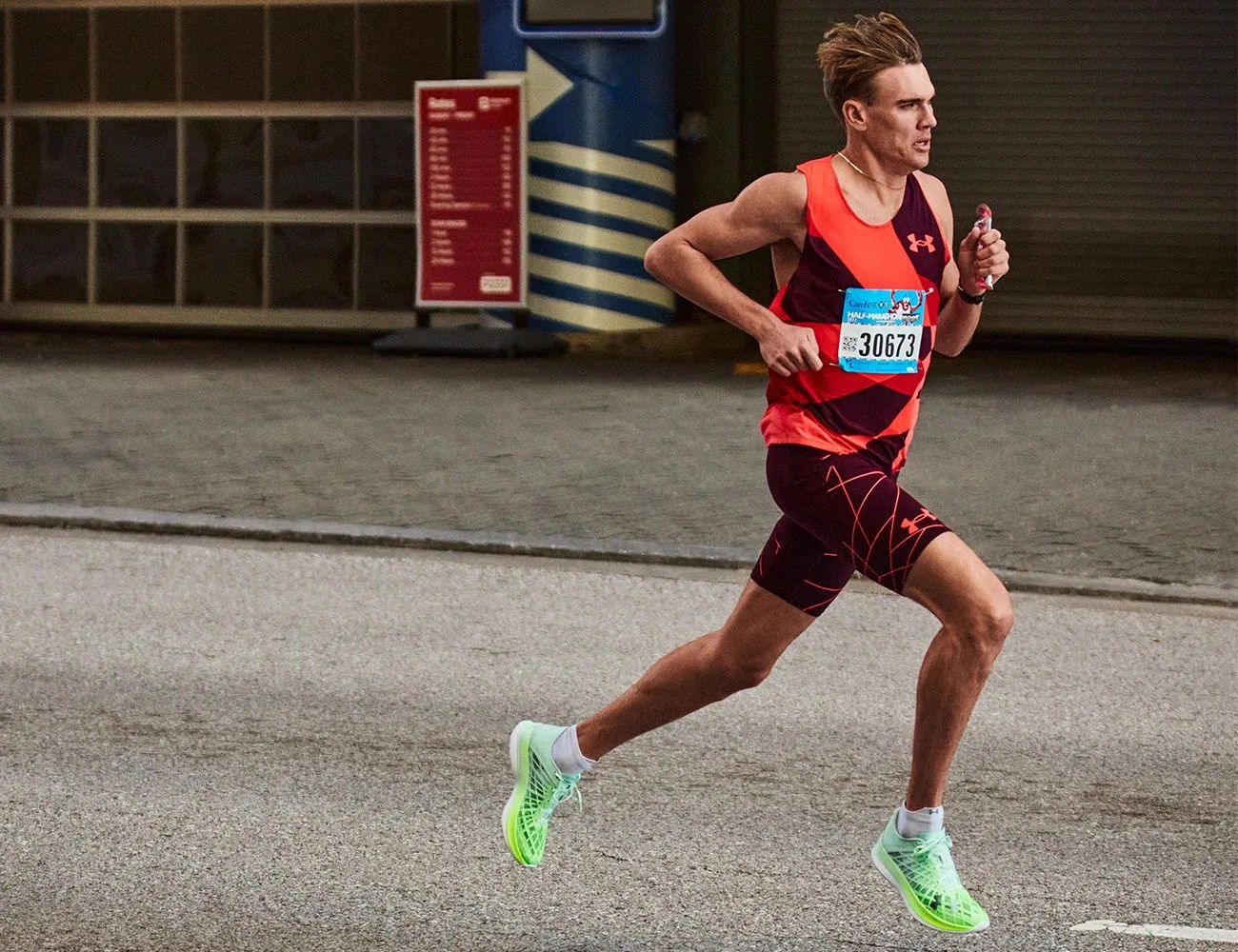Slowly and surely, Under Armour has been making a name for itself in the footwear realm. Yet despite the brand’s movement into performance-laden cleats, gym shoes and daily trainers, there’s been one facet of the sneaker world that’s been left untouched: race-ready super shoes.
Today’s marathon running shoe market is riddled with plenty of high-octane, lightweight, carbon-plated profiles designed to give athletes the support, spring and comfort needed to pace through their 26.2s. It seems every brand has their own rendition of the super shoe formula; now, though, Under Armour has (finally) joined the crowd with its latest release, the Flow Velociti Elite.
After developing the lightweight marathon shoe last year and conducting tests with the brand’s running team, the Flow Velociti Elite is set for its global release, beginning April 13. Key components across the build include a rubberless cushioning and sole system for heightened ground feel, a full-length carbon-fiber plate for snappy energy return and a breathable WARP 2.0 upper for boosted comfort for miles 1, 14, 26 and beyond.
While the measurables sound plenty ready for the starting line — and the idea of Under Armour finally releasing a carbon-plated silhouette is enticing — could it be that the brand is simply too late to the party? To see if these new marathon runners had a chance at the leader’s position, I laced up the Flow Velociti Elites across multiple workouts. Having ran in a handful of carbon-plated runners before, I took to both the track and roadways to get a grasp of what this new silhouette could deliver. I mixed up my training across various paces and distances, highlighting where I felt these kicks shined brightest.
If you’re in the market for a new pair of race day shoes, here’s what you can expect from the latest super sneakers.
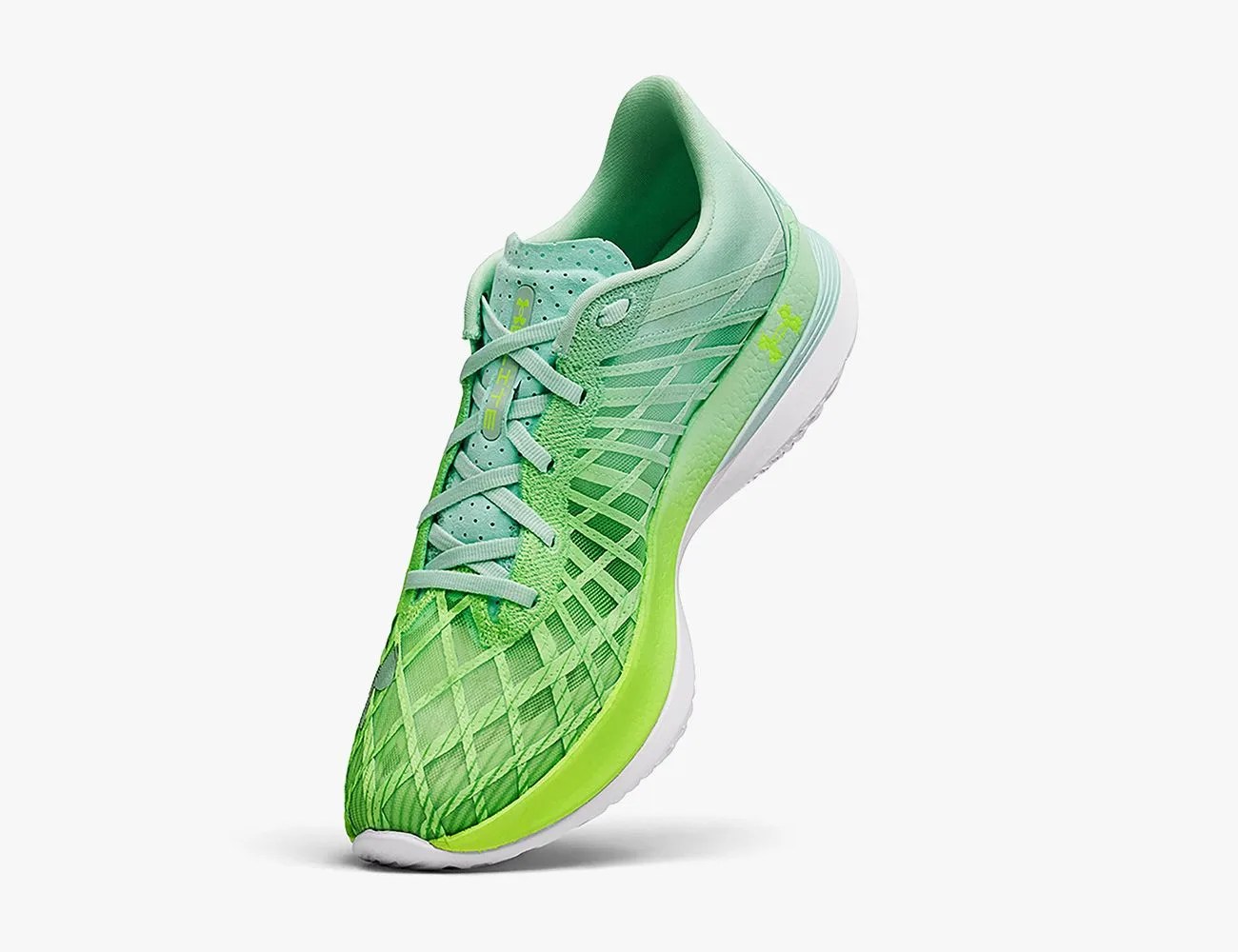 Under Armour
Under ArmourUnder Armour UA Flow Velociti Elite
Pros
- Exceptional stability that trumps other race-ready silhouettes
- WARP 2.0 upper creates a solid lockdown without compromising comfort
Cons
- Carbon plate is lacking some forward snap
- Firmness underfoot can begin to take a toll at longer mileage


